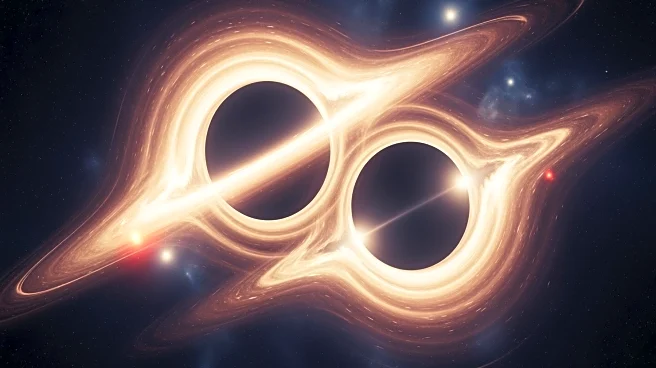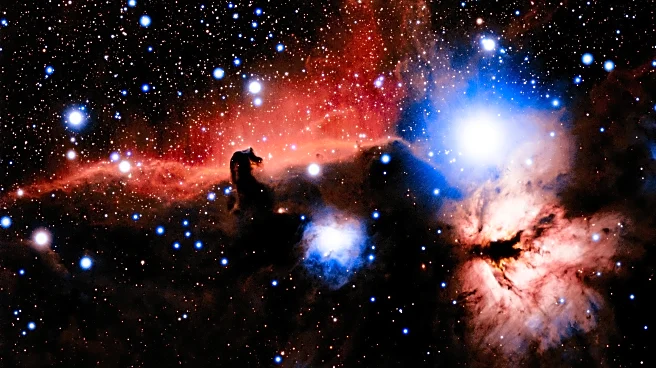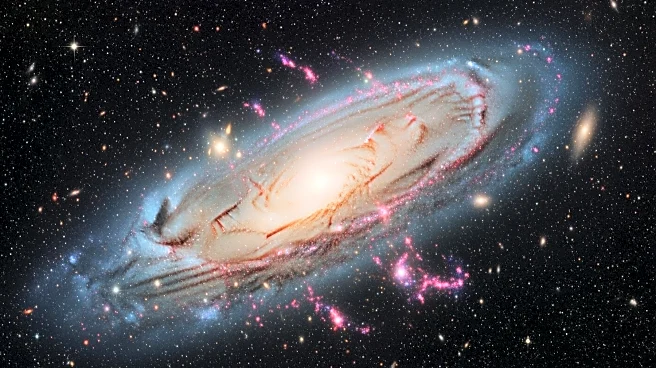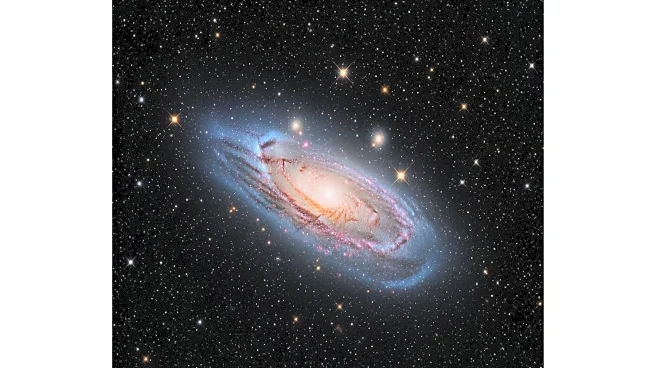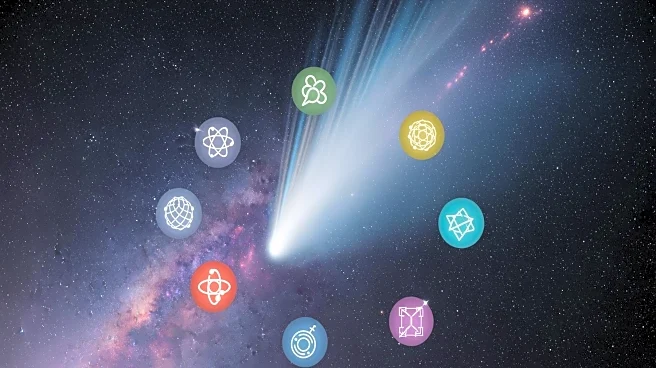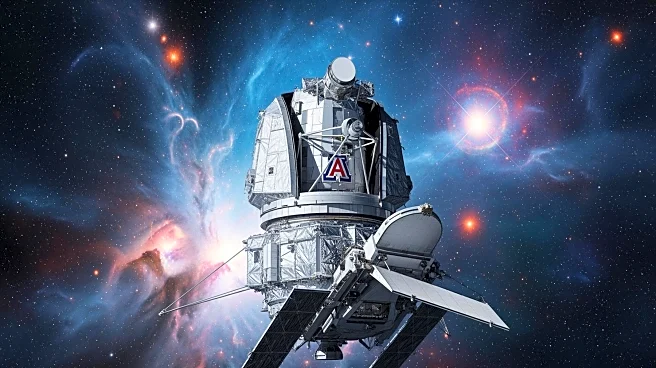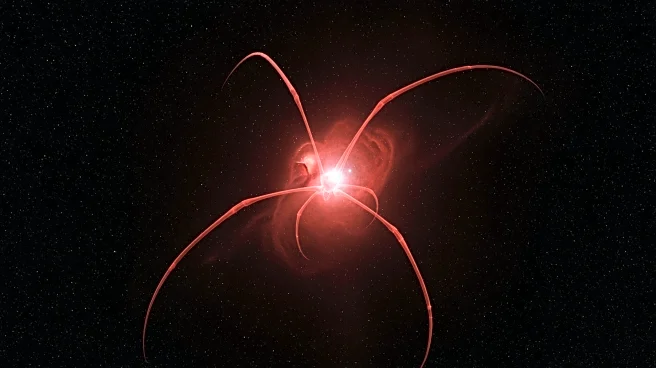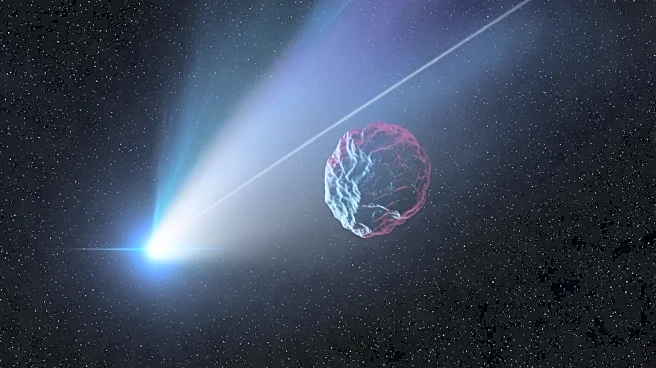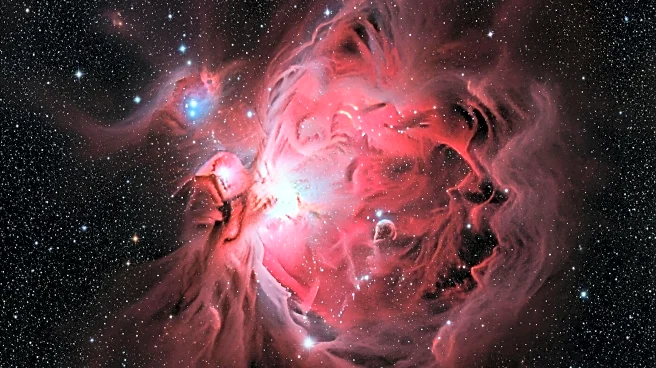What's Happening?
Physicists have observed two pairs of merging black holes, with the larger black holes in each pair being 'second-generation' black holes formed from previous mergers. These events were detected through
gravitational waves by the LIGO-Virgo-KAGRA Collaboration. The larger black holes exhibited rapid spinning and unusual mass ratios compared to their smaller counterparts. The findings suggest these black holes originated from hierarchical mergers in dense star clusters, providing evidence for complex cosmic interactions.
Why It's Important?
The discovery of second-generation black holes supports Einstein's theories on gravitational waves and black hole behavior. It enhances the understanding of cosmic evolution and the dynamics within dense star clusters. This research could lead to advancements in multimessenger astronomy, offering insights into the formation and behavior of black holes and their role in the universe.
What's Next?
Further analysis of gravitational wave data may reveal more second-generation black holes, deepening the understanding of cosmic mergers. Researchers will continue to study the implications of these findings on black hole formation theories and their impact on the universe's structure.
Beyond the Headlines
The study highlights the importance of international collaboration in advancing astrophysical research. By combining resources and expertise, scientists can uncover complex phenomena that challenge existing theories and expand the boundaries of human knowledge.
